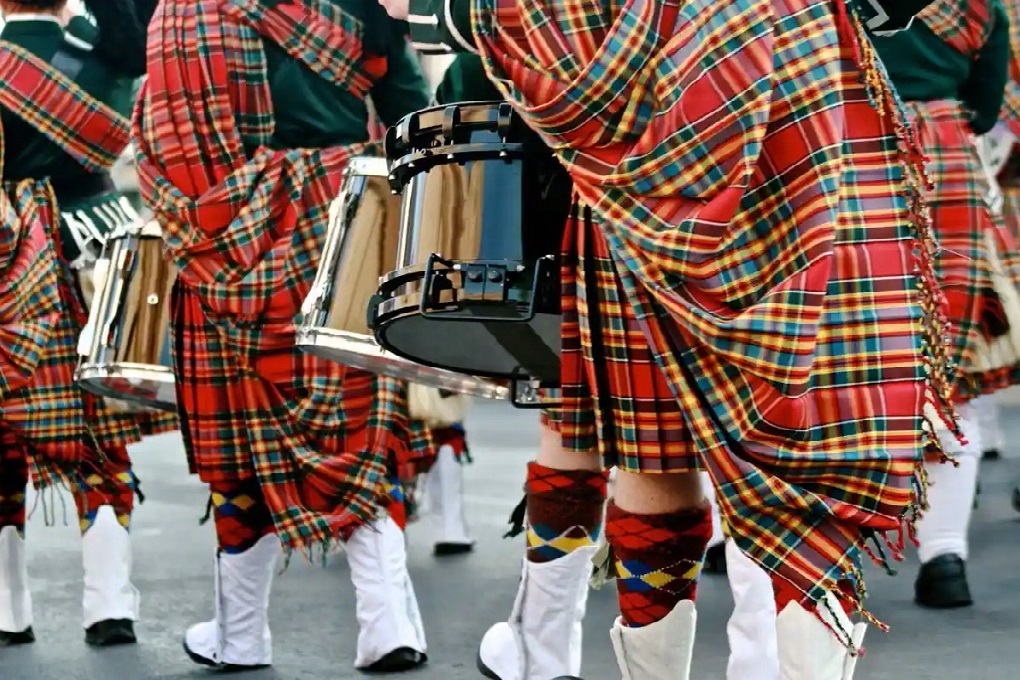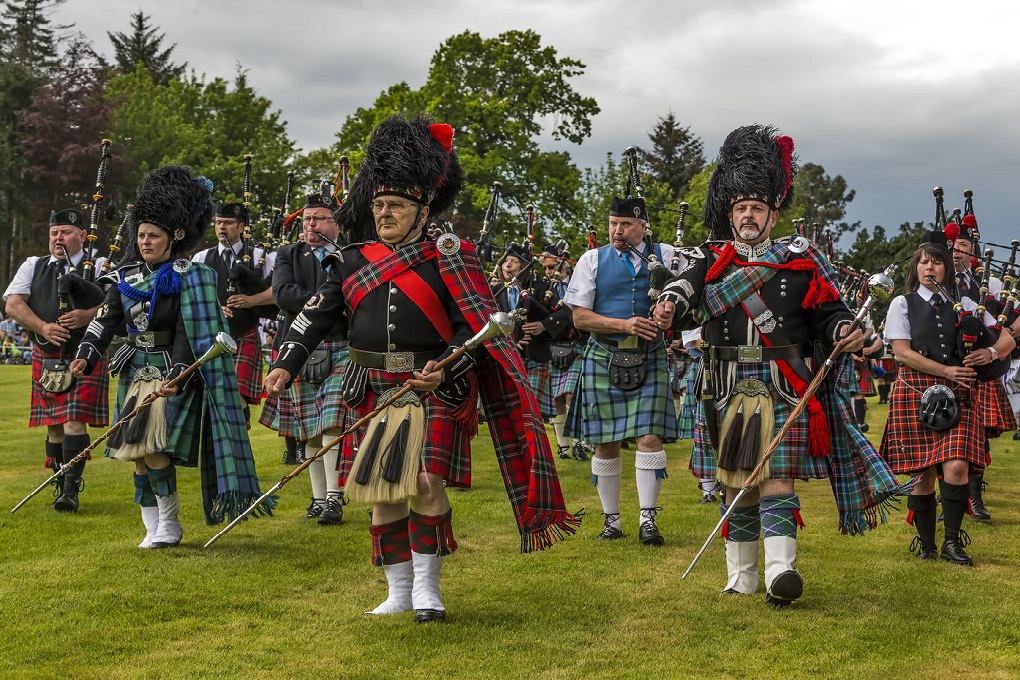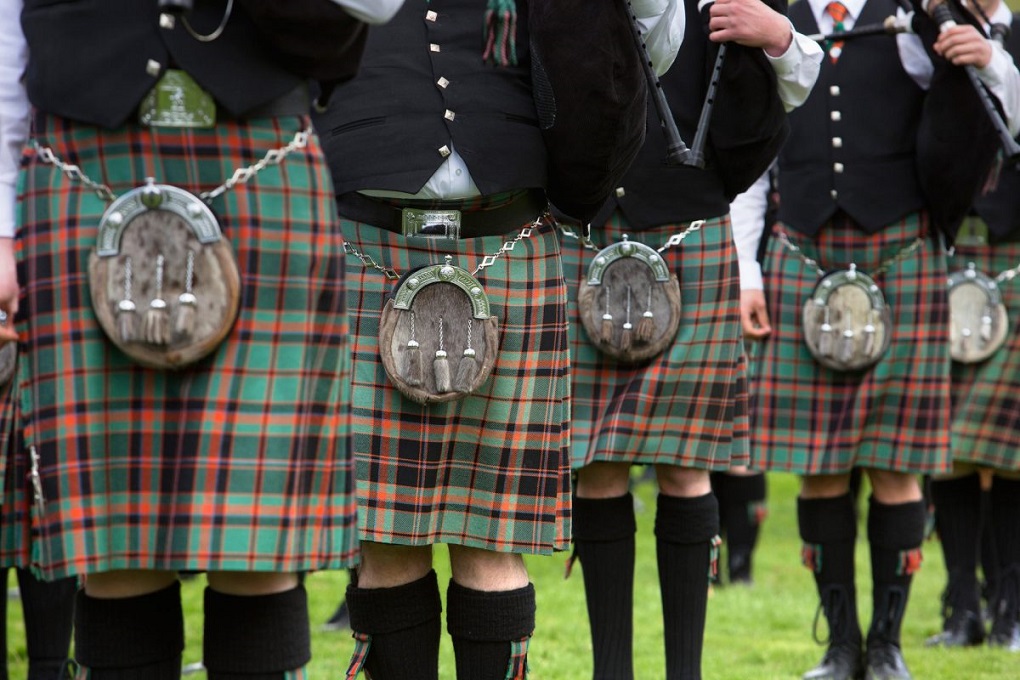Wee History of the Scottish Kilt
If one were to go back in time and visit the Highlands of Scotland about 1000 years ago, you would not see anyone wearing anything that even remotely resembles the modern kilt. The standard garment of the Gael (meaning – where the Scots speak Gaelic) was a tunic called a léine (pronounced LINE-E). This is the Gaelic word for “shirt” and the styles varied according to the time period. Initially it was a rather simple long tunic, pulled on over the head, worn long by the women and either long or to the knee by the men.
By the sixteenth century the léine had evolved into a rather elaborate garment that was very full, having sleeves that hung down to the knees, and styles that were either pull-over or that wrapped around and closed rather like a bathrobe. The most common color was saffron, although other colors were possible, and they were very often undyed.
Over this, for warmth, a woolen shawl or wrap was often worn. This mantle was called a brat in Ireland, and in later centuries was called a “plaid” in Scots Gaelic. The word originally meant “blanket”. Though tartan was not as common in Scotland then as it was at later times, these wraps could very well have been of some tartan pattern, as we have archaeological evidence of tartan cloth being worn in Scotland from the third or fourth century.
It is this tartan wrap that would later evolve into the kilt. As stated previously, the fashion in sixteenth century Gaelic Scotland was for very full clothing. The idea was the more fabric you wear in your clothing, the more affluent you must be! With the cost of wool dropping towards the end of the sixteenth century in Scotland, the woolen wraps, or plaids, began to grow larger with the fashion.
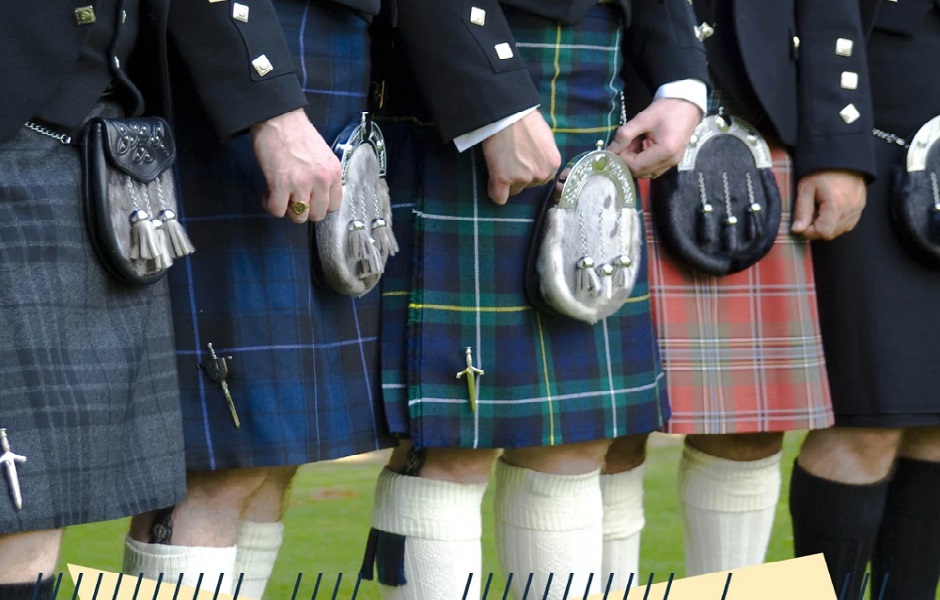
At a certain point, people began to gather these large wraps into folds and belt them about the waist. This is what we call the belted plaid. In Gaelic it was called either feileadh-mór, which means “great wrap,” or breacan-an-feileadh, which means “tartan wrap.” In modern parlance, they are referred to as “great kilts.”
The earliest mention of this garment in the historic record comes from the Life of Red Hugh O’Donnell, written in Irish Gaelic in 1594. This work describes Scottish mercenaries from the Hebrides being noticeable among the Irish because of the difference in their dress. The Scots wore their belts outside their mantles – the belted plaid!
This garment was about 4 to 6 yards long and on average 50” to 60″ wide (made from two lengths of 25” to 30″wide cloth sewn together). The length of the cloth was simply gathered up and belted at the waist, with the lower part hanging above the knees and the upper part being brought up to the shoulders and arranged in any number of ways. This garment was the ubiquitous dress of the Highland men during the seventeenth and first half of the eighteenth centuries. The female version was the Earasaid (pronounced air-i-sAde), which contained less cloth, was worn long, to the ankles, and usually was made from a white tartan with a wide spaced setting.
Tartan at this time is becoming almost synonymous with Highland Dress, though plaids in solid colors were also worn as can be seen in the 1618 portrait of the chief of the Campbells of Lochawe.
If the belted plaid is the grandfather of the modern kilt, then the phillabeg is the father. Phillabeg is the Anglicized spelling of the Gaelic feileadh-beag, which means, “little wrap.” It refers to the garment that is essentially the lower half of the belted plaid. Many today use “phillabeg” to refer to the modern tailored kilt, but the original phillabeg was untailored. Like the belted plaid, it consisted of a length of cloth, usually about 4 yards long, but only 25” wide. In other words, just the lower portion of the belted plaid, without another length of cloth stitched to it. It also would be gathered loosely into folds and belted about the waist, the bottom reaching to just above the knee and the top few inches overlapping the top of the belt with another length of cloth would be worn separately over the shoulders for warmth or protection from the elements.
Much speculation abounds regarding the age of the phillabeg. Most Highland Dress historians feel confident in putting its origins towards the mid-to-late seventeenth century. Certainly, by the early eighteenth century it was in widespread use. People are fond of recounting the story of how Thomas Rawlinson, an Englishman, supposedly “invented” the phillabeg in the first quarter of the eighteenth century. The evidence against this lay in paintings and armorial bearings that depict men in what appear to be phillabegs that pre-date Rawlinson. Most likely the feileadh-beag came about as a natural evolution from the feileadh-mor, and the fashion spread around the Highlands of Scotland over time.
Scottish Pride Quotes – “KILT – It’s what happened to the last person who called it a skirt.”
The phillabeg was worn most definitely in the eighteenth century, its use declining after the 1790s when the tailored kilt was introduced, though it continued to be worn by some as late as the 1820s.
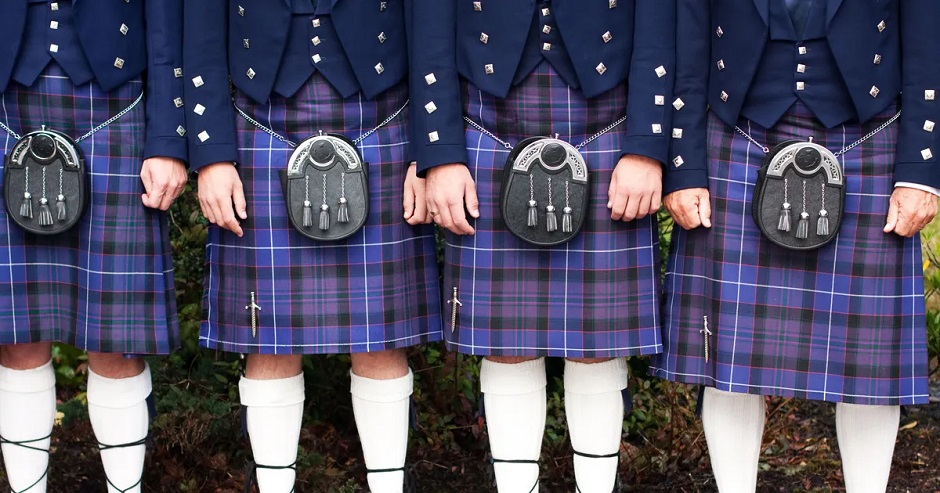
Now we come to it. The universal symbol for the Scotsman—the tartan kilt. The tailored kilt differs from the phillabeg in that instead of simply being gathered and belted on, the pleats in the kilt are sewn down.
The first instance that we have of this is in the military in the 1790s. These first tailored kilts were box pleated to the line. There was no tapering, the pleats were sewn down about 5 inches, and the length of the kilt was selvedge to selvedge. The amount of cloth used was between 3.5 and 4 yards. Tailored kilts for civilian wear soon followed suit, only these were pleated to nothing until about 1820 when they began to be pleated to the line.
The amount of cloth used in the kilt grew to about 5 yards in the mid nineteenth century, due to the pattern of the tartans becoming larger and box pleats becoming more narrow. In 1853 the Gordon Highlanders became the first regiment to adopt the knife pleat. By the year 1900 knife pleating had also become acceptable in civilian kilts and the idea of “pleating to sett” (i.e., arranging the pleats so that the pattern of the tartan was unbroken) was becoming popular. This new form of pleating caused the amount of cloth used in a kilt to grow to six, seven, even eight or more yards of tartan cloth!
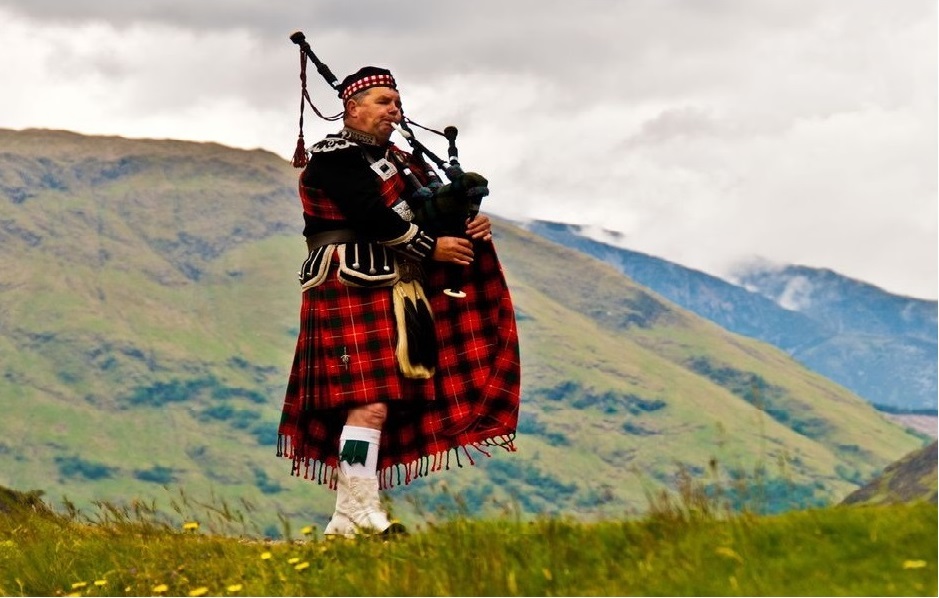
There is a myth today that a true kilt should contain 8 yards of cloth—no more, no less. Any kiltmaker worth his salt would tell you otherwise. What determines the amount of cloth in your kilt is the size of the repeat of the tartan, and of course the size of the wearer! The average civilian kilt may have anywhere from 6 to 10 yards of cloth. And recently kiltmakers have begun to also offer options that have 4 yards, a much more comfortable choice that hearkens back to when the kilt was worn as part of the daily dress.
The details of the tailored kilt evolved over time. Waistbands, linings, straps, and buckles were added as fashions changed. And what was worn with the kilt changed as well, to reflect the changing fashions of society. We will not delve into such matters as hose, sporrans, bonnets, and the like here.
Article Credit: Rev. Matthew Newsome, GTS, 2003 – A Brief History of the Kilt
Photo Credit – Tartan Trail
Photo Credit – Vox – Tartan Kilts
Photo Credit – The Pipe Band Competition – Forres
Photo Credit – SPY
Photo Credit – The Cut
Photo Credit – Pinterest


